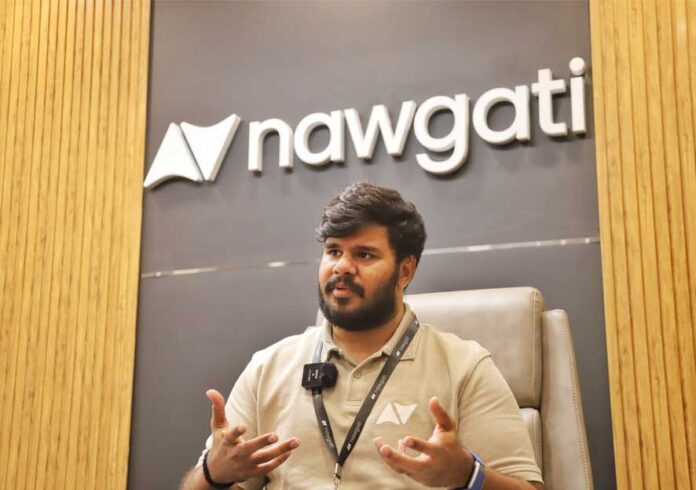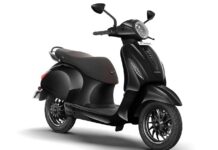
As the global mobility landscape accelerates toward electric vehicles and sustainable fuels, the need for adaptable and forward-thinking solutions has never been greater. Nawgati, which began its journey with CNG, has transformed itself into a fuel-agnostic platform designed to tackle inefficiencies at fueling stations and streamline operations across energy types. In an exclusive conversation, CEO & Co-founder Mr. Vaibhav Kaushik shares how this flexible approach enables the company—and its partners—to stay future-ready, ensuring seamless integration with emerging technologies without constant reinvention.
- Nawgati began its journey with CNG, but today, you call yourself a fuel-agnostic platform. In a world moving quickly towards EVs and sustainable fuels, how does this approach help you stay future-ready?
When we began with CNG, the focus was never limited to one type of fuel. The mission was always about solving the larger problem of inefficiency, congestion, and lack of visibility at fueling stations. Whether it’s CNG, petrol, diesel, or EV charging, the core operational and customer challenges remain the same: long queues, unpredictable wait times, and the absence of real-time data.
The technology we have designed can adapt to any energy source, meaning we can adapt our algorithms that power a CNG station today to easily integrate with an EV charger or a hydrogen dispenser tomorrow. This flexibility is allowing us to make fueling smarter and efficient now, and will help our partners and clients stay ready and agile for the next phase of mobility without having to reinvest in new tech every few years.
The speed at which we’re growing, millions of vehicles sold around the year, being fuel-agnostic will not be an added advantage; rather, it will make us relevant and indispensable in the future.
- Your partnership with MGL is seen as one of the first startup collaborations in fuel retail digitisation. What have been the biggest lessons from this experience, and how could it inspire similar tie-ups in EV charging or other clean fuels?
Our collaboration with Mahanagar Gas Limited (MGL) has been one of the most defining chapters in our journey. It marked one of the first large-scale efforts to digitally transform fuel retail in Maharashtra, bringing startup agility and scale together. We began with a pilot project at MGL’s Khopat CNG station in Thane in 2022, where we tested whether technology could bring real-time visibility to fuel retail, tracking queues, attendants, and transactions seamlessly while also allowing fleet operators to book their slots well in advance and get fueled up at their time of choice. The pilot succeeded and gave us the confidence to scale.
The biggest learning during this project was building trust through collaboration. Working with MGL meant ensuring that our solutions not only delivered technological innovation but also met the highest standards of safety, compliance, and reliability. Together, we achieved tangible results, reducing congestion at outlets, improving customer flow, and enabling real-time station monitoring.
This experience also set a precedent for how such collaborations can shape the next generation of clean energy infrastructure. As India moves into EVs and hydrogen, this model of co-creation can accelerate digital transformation across clean fuels, too.
- There’s a lot of buzz around AI and IoT in mobility. How is Nawgati actually using these technologies to turn fuel and charging stations into smarter, more connected hubs?
At Nawgati, our core focus is driving real-world change through technology, and we have integrated our platforms with IoT sensors, data analytics, and connected systems to gather live data from stations, vehicle inflow, queue lengths, dispensing speeds, and idle times. Our AI models then analyse this data to provide predictive insights, such as anticipating congestion or detecting unusual patterns in operations.
For retailers and station operators, this means they can make informed decisions in real time, whether that’s deploying more staff, optimising dispenser usage, or predicting peak-hour demand. For consumers, it results in a seamless experience, which means less waiting, transparent updates, and smarter routing to the nearest available station.
We are experimenting with various features and technologies that will enable us to support load balancing across EV chargers, predictive maintenance, and energy forecasting as the energy mix diversifies, transforming every station into a smart, connected hub in the broader mobility ecosystem.
- Digital transformation often feels like it’s designed for big players. How are you making sure Nawgati’s solutions remain practical and accessible for smaller operators as well as everyday consumers?
One of the core beliefs that drives us is that digitisation should be inclusive, not exclusive. Our products, whether it’s Aaveg for station operators or the Nawgati Fueling App for consumers, are designed to be scalable, easy to implement, and user-friendly.
We are building technology that can be used by smaller or single-operator businesses without overhauling their infrastructure or hiring technical staff to go digital. Aaveg can integrate with minimal setup and start delivering insights from day one, monitoring queues, resource allocation, and customer flow in real time. On the consumer side, our app lets people find the closest station without needing to navigate complex interfaces.
- For most people, things like trust, reliability, and transparency matter as much as convenience when it comes to fueling or charging. How is Nawgati reshaping that day-to-day experience for users?
We realised early on that the fueling experience in India is often unpredictable, and customers never know how long they’ll have to wait outside a pump or whether a station is even operational (especially on highways). We are addressing this uncertainty by bringing transparency and predictability to the process through onboarding fuel stations to our platform. To date, we have onboarded 1500+ fuel stations to our platform, and we are currently onboarding stations in Tier 2 and Tier 3 cities.
Through the Nawgati Fuelling App, users can locate nearby stations, check real-time queue status, and view amenities available at each station before making their stop. They can also make secure digital payments, reducing physical interactions and improving efficiency with the Nawgati Billing App.
This end-to-end visibility is helping us build trust, not just between customers and stations, but across the entire fueling ecosystem. Over time, we want fueling to feel as seamless, transparent, and reliable as ordering a cab or food delivery online.
- India’s clean mobility journey won’t be just about EVs—it will involve CNG, EVs, hydrogen, and more coexisting for years. How does your platform support this kind of layered transition instead of taking a one-track approach?
India’s energy transition will be layered and gradual, not a sudden switch, and we can see this today. CNG, EVs, Petrol, Diesel, and LPG will all coexist for the foreseeable future, with hydrogen and biofuels entering the ecosystem, and each will have its own challenges. We have built a platform with this reality in mind.
We are continuously onboarding petrol, diesel, CNG outlets to ensure that users find what they are looking for, and are in the process of onboarding EV charging stations for the growing EVs in the country. We want to ensure that we provide a unified digital framework that supports multi-fuel operations. This approach allows fuel retailers to diversify their energy offerings without having to juggle multiple systems.
Moreover, this might also benefit policymakers, energy providers, and other relevant stakeholders, who can view cross-fuel data and demand patterns through a single lens. In short, we’re helping India transition smoothly, not by forcing a shift to one energy type, but by enabling a connected ecosystem where all can coexist and evolve together.
- As cities get smarter, mobility data is becoming part of larger urban planning and energy conversations. Where do you see Nawgati fitting into this bigger smart city ecosystem?
We believe that we will become a critical enabler in India’s smart city framework, because the data we generate at the ground level, whether it is traffic flow into stations, peak fueling hours or energy demand distribution, all of this can provide valuable insights for urban mobility planning, traffic decongestion, and energy grid management.
As cities evolve, mobility data will increasingly influence decisions around road infrastructure, public transport, and even energy zoning. Our connected platform will make this possible by transforming fueling data into actionable intelligence.
We envision a future where every fueling or charging station becomes a node in a connected city, communicating with vehicles and public systems in real time. That’s how we see ourselves contributing, not just as a platform for stations, but as an integral part of the smarter, data-driven cities of tomorrow.
Additionally, smart cities only become smart when the people act along with the government, and our platforms, Nawgati Fueling App and Aaveg, will empower anyone who wants to fuel to maker smarter, efficienct choices, contributing to a smart city ecosystem.
- Unlike many Western countries that are pushing for EV-only adoption, India is moving towards a multi-fuel model. Do you think Nawgati’s story could become a blueprint for other emerging economies on a similar path?
We are a country with a diverse economic background, and moving towards full EV adoption would be financially unviable for the masses. Hence, the government is encouraging people to choose EVs alongside cleaner fuels like CNG and ensuring their last-mile reach.
Moreover, emerging economies like ours, Indonesia and Nigeria, share similar traits: diverse vehicle mixes, inconsistent infrastructure, and multiple fuels coexisting. An EV-only model isn’t immediately practical for these markets.
What Nawgati offers is a scalable, adaptive framework that modernises the existing fuel ecosystem while making room for new energy types. It’s about building digital infrastructure that keeps pace with the market, rather than dictating it.
Our journey shows that innovation doesn’t have to mean replacement; it can mean transformation. And that’s a lesson many other developing nations can take from India’s mobility evolution.
- Looking ahead, what’s your long-term vision for Nawgati’s role in shaping the next decade of India’s clean, connected, and fuel-agnostic mobility ecosystem?
We are growing faster than ever, and with that, the need for comfort and convenience is significantly increasing. So, the next decade will be all about redefining how India fuels, charges, and moves. In that, our role will be to connect the dots between stations, fleets, consumers, and energy suppliers to create a single, intelligent layer that powers every fueling or charging interaction.
We envision a future where every station, regardless of location or fuel type, is connected, predictable, and digitally optimised. Through partnerships, technology, and data, we want to make refueling as seamless and transparent as possible for every Indian, while helping operators run more sustainably and profitably.
Ultimately, Nawgati’s vision is to become the digital backbone of India’s energy transition, bridging today’s conventional fueling networks with tomorrow’s clean and connected mobility infrastructure.








